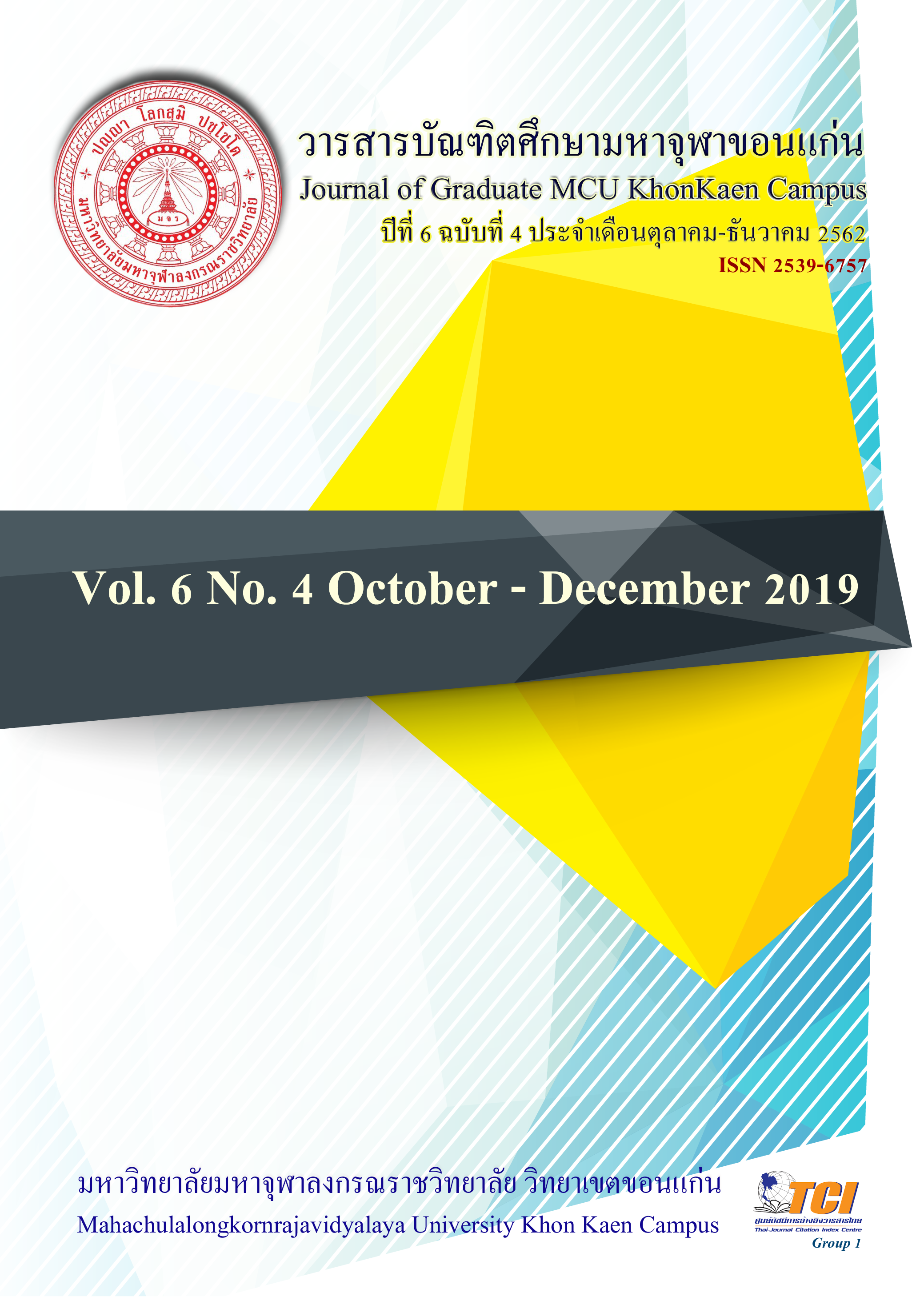TOPONYMY OF TEMPLES IN THAILAND AND AND LAO PEOPLE'S DEMOCRATIC REPUBLIC : THE COMPARTIVE NAMING
Main Article Content
Abstract
This research The objectives are: 1) to study the history and landscape, naming the temples in Thailand 2) to study the history and landscape, naming the temples in the Lao People's Democratic Republic and 3) to compare the concepts and the landscape Name of temple name in Thailand and Laos In this study, the researcher used historical research methodology to search for evidence in the past, focusing on primary and secondary documents. Used to analyze, synthesize, compare and summarize as knowledge, discuss results and present the study results with descriptive analysis method. Tools for data collection are Data were collected by one-on-one interviews, monks, monks, administrative administrations, related temples. And community leaders, village headmen.
The results of the research revealed that :
- Background and nomenclature, naming the temple in Thailand, found that it can be divided into seven types of landscape, naming, and measurement as follows: 1) landscape and language Is a dialect accent 2) landscape with local history The name of the temple will mention the story of the local history. 3) Landscape with folk tales Which is a story about the temple Or local legend 4) landscape and life style The name of the temple is related to the way of life of the people who settled in that area. 5) Landscape with beliefs and values The name of the temple may reflect some beliefs and values of the people, such as the belief in the prosperity of the words that will affect the people who live in that locality. Stay cool and continue. 6) Geography and geography Is named after various locales Reflecting the characteristics that relate to the geography of that locality, such as topography Climate, plant species, animals and natural resources, etc. 7) landscape and location Is the name of the house or village in which the temple is located.
- Background and nomenclature The naming of temples in the Lao People's Democratic Republic found that it can be divided into five types of landscape, nomenclature, nomenclature, as follows: 1) landscape and location of settlement 2) landscape with Natural resources 3) Landscape with historical events 4) Landscape with myths that come from the names of beliefs and values 5) Landscape with names of builders in honor of their father Of those who raise land to build.
- Comparison of concepts and characteristics of the naming of temples in Thailand and the Lao People's Democratic Republic found that the similarities and differences between Phumnam, the name of temples in Thailand and Lao PDR, both similar and different As a result of geographical factors Cultural and religious foundation Which can be summarized as follows: 1) The important religions that have been propagated and respected by people in Southeast Asia are Buddhism, which is the religion that most people in Thailand, Laos, respect. Religious ceremony The various beliefs of Laos are similar to Thai people. 2) Archaeological sites and antiques Which has similar characteristics 3) beliefs are characteristics of respect or conformity in one thing By believing that building a temple will be a factor that encourages success in every 4) The person who is a religious person Is a person or group that is directly related and important to the temple Most of them are the king's class. Royalty Civil servants with feudalism are 5) natural characteristics Is the physical aspect of the environment that is the dominant feature of the area where the temple is located.
Article Details
References
Kanokwan Aree Pattanaphaibun. (1991). Study of the village name, Amphoe Tha Bo Nong Khai province. Master's Degree Thesis, Maha Sarakham : Mahavalai University. Srinakharinwirot.
Paitoon Pongsabutr. (1988). Geographic accompanying names that describe local topography in Thailand. Journal of Geography 13, 1 (March 1988) p. 5-11.
Phra Maha Suwanketchan. (2009). Analytical study of the landscape of temples in Phra Nakhon District Bangkok. Master of Thai Language, Srinakharinwirot University.
Prajak Saisang. (2004). Concept of temple naming: a comparative study of temple names in Mueang District Phitsanulok Province and Mueang Chiang Mai District. Journal of Humanities Naresuan University Year: 1 Issue: 1 Page number: 1-17 Year B.E.: 2004.
Premwit Wiwatset. (2008). Temples in Mueang Phayao District, Phayao Province : A Study of Naming and Relationships with Social Context. Phayao : Naresuan University.
Senaha Bunyarak and Thip Sudanaisap. (1999). Phum Nam, Phitsanulok Province. Cultural research and research project Phitsanulok Office of Art and Culture: Rajabhat Institute Pibulsongkram.
Sucharitlaksee Phadung. (2000). Name of a village in the western region of Thailand: Kanchanaburi, Nakhon Pathom, Prachuap Khiri Khan, Phetchaburi, Ratchaburi, Suphan Buri, Somrut Songkram, Samut Sakhon. Nakhon Pathom : Institute for Language and Culture for Rural Development Mahidol University.
Thai-Laos Friendship Journal, Year 14, issue 2 (April - June 2007).

